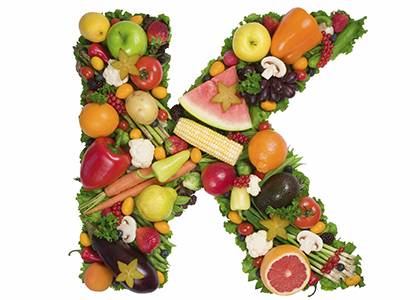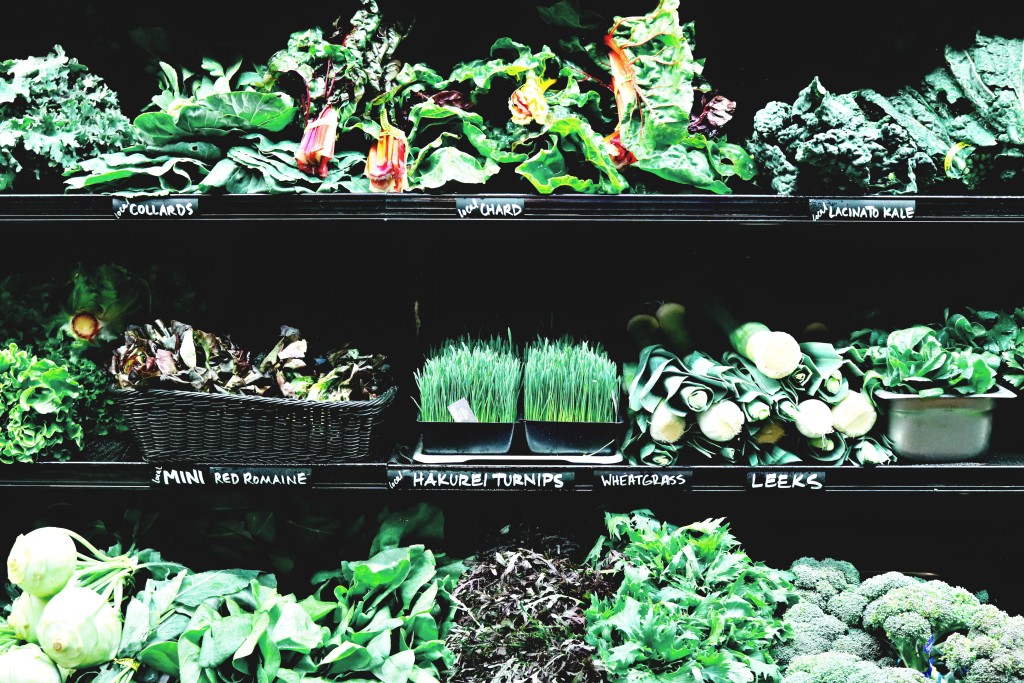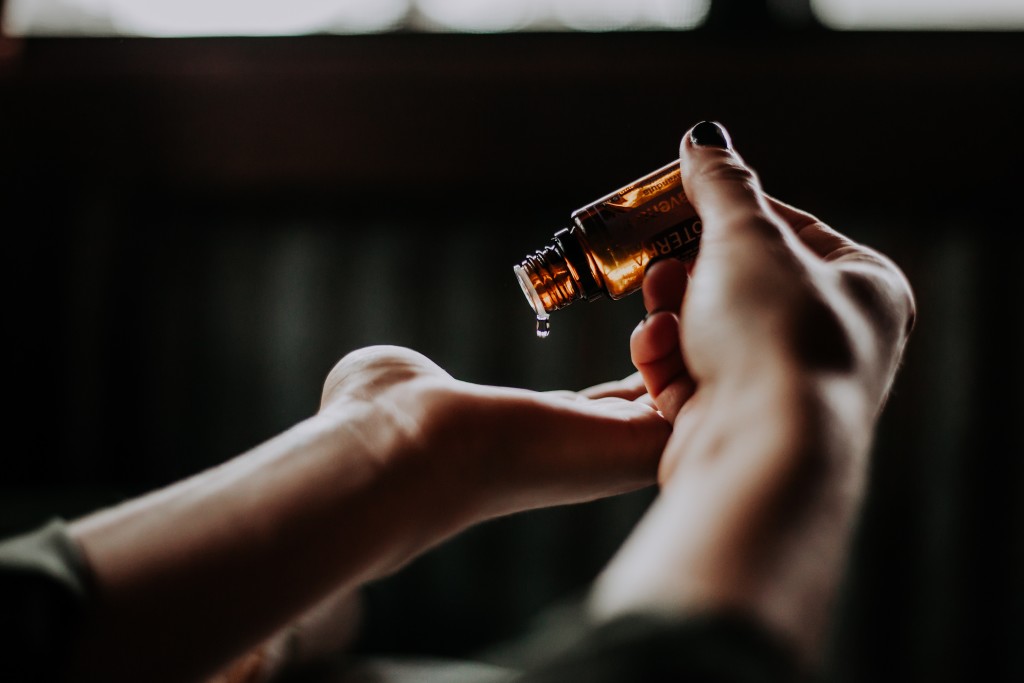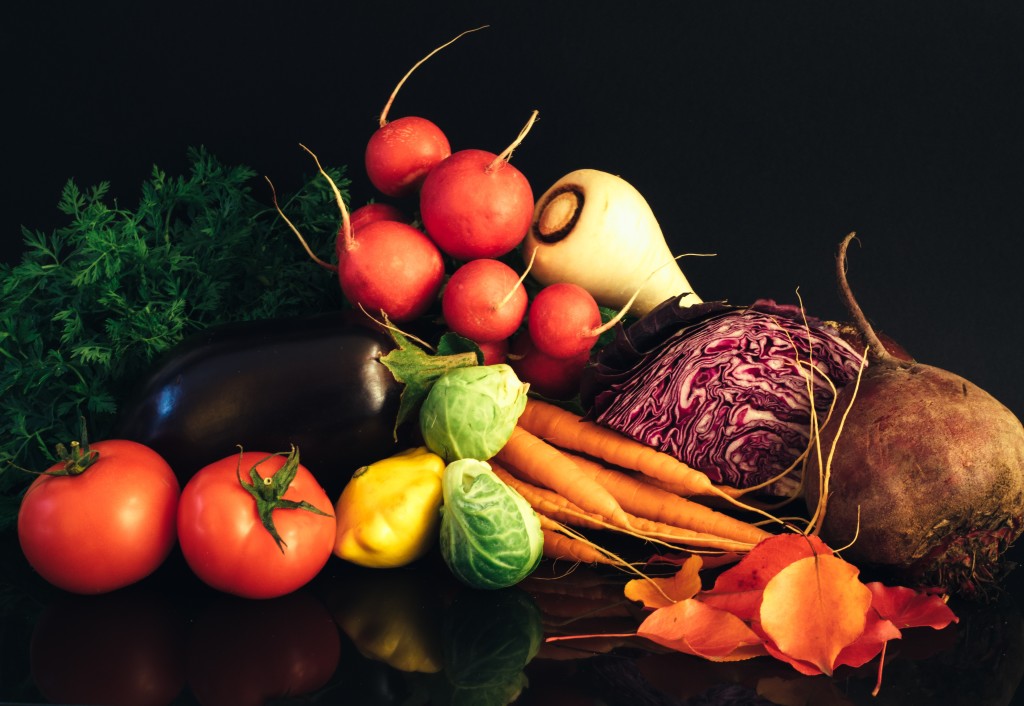Tags
acne aging anti-aging beauty detox diet exercise fasting healing health healthy lifestyle healthy living healthy recipes inspiration juicing Living la Vida Raw meditation mindfulness Move Your Body Natural Beauty natural cures Natural Cures natural remedies nutrition nutritionist parasites raw raw food Raw Food for Thought raw foods raw girl Raw News raw recipes Raw Spirit Recipes skin spirulina stress vegan vegan lifestyle vegan recipes vegetarian Veggie Love wellness yogaNewsletter Sign-up
Tag Archives: healthy living
The Science Behind Why I Hate Social Media (Part 1)
“Your character is built on what you do, not on what you broadcast.”
Although the quote above rings true, social media has us stuck in the cycle of curating and broadcasting moments for the sake of likes, self-image, branding, and at its worst, to bolster self-worth. Almost every week I debate whether or not to delete all of my social media accounts. Why? I’m aware that social media is addictive, it wastes my time, and can leave me feeling not as happy as I was before I logged on. I also realized that my deepest and closest friendships are with friends who are not big on social media. Because of this we actually call each other, schedule time to catch up, and don’t have to worry about one of us obsessively posing for a selfie before we eat our lunch. What I wasn’t aware of, was that my inner hunch was backed by real science that suggest that not only is prolonged social media use not so great for our mental health, it also has a negative effect on the motivation needed to achieve our goals, and building authentic relationships. I’m aware that social media is not all bad, and I myself have benefited to some degree from opportunities that have emerged from social media. However by in large the opportunities that have mattered the most to my career required me to put more time in working hard behind the scenes, rather than scrolling.
Social media can lower our motivation and ability to delay gratification. To begin looking at the potential harmful effects of social media, we have talk about dopamine. Dopamine is a so-called messenger substance or neurotransmitter that conveys signals between neurons. However, serious health problems can arise if too little or too much dopamine is being produced. Dopamine is responsible for our seeking and motivation; we get hits of it as we work towards a goal and a big burst when we actually get what we desire. Cell phone use and the anticipation of texts and likes etc. actually gives us a huge dopamine burst; so over time we may end up feeling less motivated, get depressed, have issues with delayed gratification, not to mention it also can affect the depth of our social relationships. One study published in the Journal of Neuroscience, showed that when there are elevated levels of dopamine in the brain people are more impulsive, and make decisions that seem to benefit them immediately, but may have adverse or diminishing rewards in the future. Why is this important? We are essentially training an entire generation to live for the now, which will have a negative effect on their futures. What’s more rewarding, training daily to get the body you want, or posting a retouched photo that makes you look as if you have the body you want? Our generation chooses the latter more often than the former.
Excessive dopamine stimulation has real cognitive health consequences. When and if someone is depressed, that lack of motivation comes from low dopamine levels. This lack of motivation is also seen in Parkinson’s disease, multiple sclerosis, fibromyalgia and more. Because dopamine neurons are integral to helping us remember things short term, with low dopamine we may end up being very forgetful. The addiction response is also tied to dopamine release, and unfortunately it causes a seeking for pleasure that needs more and more stimulation to satisfy. Getting rid of some common stimulants that elevate dopamine such as: sugar, alcohol, cocaine, caffeine, marijuana, and addictive behavior such as social media will help us begin to increase our levels naturally. High intensity exercise also naturally increases dopamine. What I find most disturbing about this is that it points to a re-wiring of our brains over time! When I researched the Parkinson’s – dopamine connection, I also wondered, what happens to the brains of an entire generation when they get much older? Are we going to see bloggers and influencers with higher levels of cognitive decline? Scary to think about, but there’s more…
Social media addiction increases GABA levels in the brain. In one study that focused on the brains of smartphone and internet-addicted teenagers, the researchers performed MRS exams to measure the levels of GABA (gamma aminobutyric acid) and Glx (glutamate-glutamine) before and after smart phone use. GAMA is a neurotransmitter in the brain that slows down brain signals and is involved in vision control, motor control, and the regulation of anxiety, and Glx causes neurons to be more excited. Too much GABA can also cause drowsiness and increase anxiety levels. What they found was that in the teenagers with smartphone addiction the ratio of GABA to Glx was significantly increased compared to normal teenagers without the addiction. Here’s the part that gets worrisome: “Dr. Seo [ the researcher behind the study] believes that increased GABA in internet and smartphone addiction may be related to the functional loss of integration and regulation of processing in the cognitive and emotional neural network,” [4]. Wait a minute…so my my addiction to Instagram or Facebook could lead to diminished brain processing or some sort of glitch in my daily emotional response or mood? Yep. By the way the kids in the study did recover, but only after cognitive behavioral therapy.
I could go on, but I think the points above give a lot to think about. The more I researched the more I was determined to find a way to drastically reduce the time and energy I spend on social media. In my followup up post, I’ll give you some real tips that work to ensure you aren’t spending all your dopamine on your insta-feed, and you have enough motivation left to chase your wildest dreams. -XO Raw Girl
References:
- Asociación RUVID. (2013, January 10). Dopamine regulates the motivation to act, study shows. ScienceDaily. Retrieved July 22, 2018 from www.sciencedaily.com/releases/2013/01/130110094415.htm
- Caldiroli A, Serati M, Buoli M. Is Internet Addiction a Clinical Symptom or a
Psychiatric Disorder? A Comparison With Bipolar Disorder. J Nerv Ment Dis. 2018
Jul 19. doi: 10.1097/NMD.0000000000000861. [Epub ahead of print] PubMed PMID:
30028359. - Medical University of Vienna. (2016, August 31). Dopamine: Far more than just the ‘happy hormone’. ScienceDaily. Retrieved July 22, 2018 from www.sciencedaily.com/releases/2016/08/160831085320.htm
- Radiological Society of North America. (2017, November 30). Smartphone addiction creates imbalance in brain, study suggests. ScienceDaily. Retrieved July 22, 2018 from www.sciencedaily.com/releases/2017/11/171130090041.htm
- Wellcome Trust. (2010, June 30). Impulsive, weak-willed or just too much dopamine? Brain study highlights role of dopamine in impulsive behavior. ScienceDaily. Retrieved July 22, 2018 from www.sciencedaily.com/releases/2010/06/100629170922.htm
The Many Reasons to Love Cruciferous Veggies
If I was stranded on a remote island “Survivor” style and could only pick one class of veggies to bring with me, it would be the crucifers, without contest. Cruciferous vegetables (also known as Brassicas) include broccoli, broccoli rabe, cauliflower, cabbage, Brussels sprouts, kale, collard greens, turnips, turnip and mustard greens, arugula, watercress, bok choy (Chinese cabbage), kohlrabi, radishes, and daikon. Although all vegetable have nutritional benefits, the crucifers are superstars in the veggie world as they have been proven by research to assist in detoxification, stimulate the immune system, reduce degenerative damage in the nervous system, protect against cardiovascular disease, slow and even reverse decline of brain functioning and cognitive performance, and can help to restore balance to the endocrine system. Besides their stellar benefits to the bodies’ systems, crucifers have a great nutritional profile containing vitamins, minerals, and fiber that we need to maintain healthy elimination and weight.
There has been quite a bit of research conducted that has shown that increased consumption of cruciferous vegetables lowers the risk of contracting cancers including breast and prostate. The phytochemicals found in cruciferous vegetables can stimulate enzymes in the body that will remove carcinogens through the body’s’ detoxification pathways before they damage cells. By now you may be aware of the harmful effects stress can have on your body. Well oxidative stress, which occurs from the overload of harmful molecules called free radicals, accelerates our aging and can lead to disease or health conditions over time. When you consume large amounts of cruciferous vegetables, you reduce oxidative stress which in turn helps to reduce the risk of colon, lung, prostate, breast, and other cancers. In animal studies, cruciferous vegetables have been shown to reduce inflammation; which may point to an anti-inflammatory effect as one of the benefits for human consumption.
Just in case you aren’t convinced that #TeamCrucifer is the greatest, there are some vanity reasons to consume them as well. For those struggling with acne for hormonal reasons, cruciferous vegetables can provide some relief because they assist the body in restoring hormonal balance. This also makes consuming cruciferous vegetables wonderful for women struggling with fibroids or endometriosis who may have an issue of estrogen dominance. Whatever reason you chose to join #TeamCrucifer know that getting your greens in will help improve your overall health, skin, youthfulness, and vitality. -XO Raw Girl
References:
Abdull Razis AF, Noor NM. Cruciferous vegetables: dietary phytochemicals for
cancer prevention. Asian Pac J Cancer Prev. 2013;14(3):1565-70. Review. PubMed
PMID: 23679237.
APAPollock, R. L. (2016). The effect of green leafy and cruciferous vegetable intake on the incidence of cardiovascular disease: A meta-analysis. JRSM Cardiovascular Disease, 5, 2048004016661435. http://doi.org/10.1177/2048004016661435
Jiang Y, Wu SH, Shu XO, Xiang YB, Ji BT, Milne GL, Cai Q, Zhang X, Gao YT,
Zheng W, Yang G. Cruciferous vegetable intake is inversely correlated with
circulating levels of proinflammatory markers in women. J Acad Nutr Diet. 2014
May;114(5):700-8.e2. doi: 10.1016/j.jand.2013.12.019. Epub 2014 Mar 13. PubMed
PMID: 24630682; PubMed Central PMCID: PMC4063312.
Wu QJ, Yang Y, Vogtmann E, Wang J, Han LH, Li HL, Xiang YB. Cruciferous vegetables intake and the risk of colorectal cancer: a meta-analysis of observational studies. Annals of Oncology 2013; 24(4): 1079-1087.
5 Simple Ways to Be a Healthy Living Superhero
 We are official midway through 2018 and those new year’s resolutions can now feel like a passing dream. It’s always great to stop, reassess and take some new baby steps towards achieving your optimal health. If you’ve fallen off the healthy living bandwagon just in time for summer, or you are doing just fine but need some more motivation, here are five simple ways to be a healthy living superhero this week:
We are official midway through 2018 and those new year’s resolutions can now feel like a passing dream. It’s always great to stop, reassess and take some new baby steps towards achieving your optimal health. If you’ve fallen off the healthy living bandwagon just in time for summer, or you are doing just fine but need some more motivation, here are five simple ways to be a healthy living superhero this week:
1. Do one thing to improve your physical strength. Whether it be strength training, weight bearing exercises, or Pilates find something that builds muscle & get all the way into it. Pick something that challenges you and pushes you past your comfort zone.
2. Stay Mentally Alert by practicing mindfulness each day for a minimum of 5 minutes. (Meditation, prayer, Taichi, Qi gong, walking in nature) find what works to release some stress and do you boo!
3. Stay hydrated! If you are not sure how much water to drink; the general rule is you should drink 1/2 your body weight in oz of water. If you are well over 200 lbs, don’t drink more than 100-125 fl oz per day. Hydration is so simple but essential that without it we can feel drained, fatigued, or even lose focus. If you are not drinking have your body weight in water, work your way up to it and take stock of how you feel.
4. Take your daily multivitamin (plus vitamin D & omega – 3 fatty acids) & aim for 4-5 fruits and veg per day —every day this week. Taking your Vitamins can change your life, and for superhero level health they are essential for filling the gaps when our food choices fail us.
5. Incorporate superfoods 🙂 to get more nutritional bang for your buck try a superfood you’ve never experimented with before: moringa , baobab, spirulina, cacao, camu camu, maca, etc are all packed with superhero level nutrition.
Need a coach? I’m in my office seeing clients this week! Woop! Your girl will be a full-fledged nutritionist in August! Right now I’m taking clients via Skype or in-person at Wellness Cooperative in Old Town Alexandria. If you want to know whats holding you back from living your healthiest, best life I can help. My nutrition tune-ups involve assessing your diet and any medical conditions to help you figure out what adjustments you can make to feel amazing or heal. You will complete the session aware of any nutritional deficiencies, and also with an idea of the supplements or lifestyle changes that can help propel you forward on your healthy living path. To learn more or book your coaching session click here.
Zinc for Beautiful Skin, Nails, & Hair
 Zinc deficiency is extremely common, and research has suggested that over 25% of the worlds population is at risk. And that is a conservative estimate. The worst part is that most adults are deficient in zinc and have no idea. I recently got hip to the prevalence of zinc deficiency when taking on nutrition clients. As a part of our initial consult, I give all of my clients who meet me in person a Zinc Tally Test, which can indicate whether or not the body has sufficient zinc. Nine times out of ten, the test indicates that deficiency is present. I took the test myself and discovered my zinc was low and have been supplementing ever since then. The recommended daily intake of zinc for women is 8 mg/day and for men 11 mg/day. For plant-lovers, it’s important to monitor zinc levels because many zinc sources are from animal products; it’s harder now to get adequate zinc from plant sources due to the low quality of soil. Besides increasing your chances of being able to whip your hair back and forth, zinc is key for:
Zinc deficiency is extremely common, and research has suggested that over 25% of the worlds population is at risk. And that is a conservative estimate. The worst part is that most adults are deficient in zinc and have no idea. I recently got hip to the prevalence of zinc deficiency when taking on nutrition clients. As a part of our initial consult, I give all of my clients who meet me in person a Zinc Tally Test, which can indicate whether or not the body has sufficient zinc. Nine times out of ten, the test indicates that deficiency is present. I took the test myself and discovered my zinc was low and have been supplementing ever since then. The recommended daily intake of zinc for women is 8 mg/day and for men 11 mg/day. For plant-lovers, it’s important to monitor zinc levels because many zinc sources are from animal products; it’s harder now to get adequate zinc from plant sources due to the low quality of soil. Besides increasing your chances of being able to whip your hair back and forth, zinc is key for:
- Clear skin: Zinc deficiency can manifest as acne, eczema, or dry scaly skin.
- Strong Nails: if your nails break often and easily or you have white spots on your nails you may be deficient in zinc
- Proper Immune Functioning: deficiency increases vulnerability to a range of infections
- Proper Elimination: deficiency can lead to diarrhea or increase its severity
- Brain & Emotional Health: insufficient zinc can effect memory retention and mood including irritability, lethargy, and depression
- Vision, Taste, & Smell: deficiency can affect ability to taste, and clarity of vision, and the ability to smell
- Sexual Health: without enough zinc testosterone production can decrease in men
What to do if you are deficient?
Increasing intake of foods that are high in zinc such as pumpkin seeds, dark chocolate, garlic, sesame seeds, chick peas, wheat germ, quinoa, almonds, cashews, oatmeal is one option. If you are a meat-eater, you will get zinc from animal products, but still may not be getting enough. In addition to food options, its always a great idea to supplement. You can actually supplement with a Zinc Tally Test, and the brand Metagenics makes a great one I use to test my clients.
References:
Maret W, Sandstead HH (2006). “Zinc requirements and the risks and benefits of zinc supplementation”. Journal of Trace Elements in Medicine and Biology. 20 (1): 3–18. doi:10.1016/j.jtemb.2006.01.006. PMID 16632171.
Michaëlsson G (February 1981). “Diet and acne”. Nutrition Reviews. 39 (2): 104–6. doi:10.1111/j.1753-4887.1981.tb06740.x. PMID 6451820.
Yamada T, Alpers DH, et al. (2009). Textbook of gastroenterology (5th ed.). Chichester, West Sussex: Blackwell Pub. pp. 495, 498, 499, 1274, 2526. ISBN 978-1-4051-6911-0.
Natural Remedies for Asthma
Most of us have heard of asthma or the very least know someone struggling with it. Asthma is a chronic disease that affects your airways, or tubes that carry air in and out of your lungs. If you have asthma, the inside walls of your airways become sore and swollen. This increases the sensitivity of the area, and may cause strong reactions to allergens. During a reaction, the airways get narrower and your lungs get less air which can cause coughing, wheezing, chest tightness, and trouble breathing.
Who can it affect?
Asthma can occur at any age, but is most common in children under 10 years of age [2]. It affects approximately 3% of the U.S. population and is twice as common in males vs. females under 30 years of age. After age 30, females and males are affected equally [2].
How do I know if I have asthma?
Some of the common signs and symptoms of asthma include: wheezing, tightness in the chest, coughing, difficulty breathing, low peak expiratory flow rate, dark circles under the eyes with swelling. Symptoms usually worsen at night.
What causes it?
Asthma, is usually the result of one or more Triggers. Some triggers (such as animal dander, dust, pollen, food, or drugs) elicit an immune response from the body, and others don’t but can be caused by a respiratory infection.
Underlying Imbalances: Atopic Dermatitis increases risk of asthma threefold, Low stomach acid production, Increased intestinal permeability or Leaky Gut, Candida albicans, Hormonal imbalances (including menstrual cycles in women), Psychological and emotional factors, Stress, Genetics.
Food Sensitivities: Food additives (coloring agents, azo dyes, common preservatives are sodium benzoate, 4-hydroxybenzoate esters, and sulfur dioxide.) Genetically modified foods, Salt (worsens bronchial reactivity and mortality).
Physical Causes: Respiratory infections, exercise, hyperventilation, stress, depression, and fear also can trigger an asthma attack. Physical exertion/exercise, Rapid changes in temperatures/humidity & breathing cold air.
Allergens or Medications: dust mites, animal dander, dust, pollen, mold, cockroach mites; Toxins or irritants: tobacco smoke, air pollutants, industrial fumes, volatile chemicals, gasoline, paint thinners and others. Medications- aspirin, penicillin, sulpha drugs, vaccines (especially pertussis or influenza), Genetics.
Below is a hypothetical intervention plan for asthma. It is important to work with your nutritionist or health practitioner to receive recommendations that are tailored to your specific symptoms and health history.
Interventions for Asthma
Today’s Goal: To increase intake of fruits and vegetables, reduce/eliminate additives, preservatives, and food allergens, increase water intake to ½ of weight in fluid ounces to encourage healing of asthma.
Nutrition
- Increase consumption of foods rich in antioxidants (fruits and vegetables), plenty of garlic and onions, essential fatty acids (wild caught cold water fish) – High plant based diet if meat, consume fish.
- Reduce/ eliminate processed foods, sodium intake, and avoid food additives & preservatives – avoid all/as many as possible, particularly those listed in the text
- Avoid/limit genetically modified foods & pesticides (Review Environmental Working Group – Dirty Dozen & Clean Fifteen)
- Increase consumption of fruits high in vitamin C
- Optimize GI health (address any hypochlorhydria, intestinal permeability and dysbiosis issues present and assess for and address other functional GI imbalances)
Supplements
Adults:
- Carlson Labs – Fish Oil – 2 teaspoons
- Klaire Labs VitaSpectrum Capsule Formula Multivitamin (preservative-free) – 5 capsules or 1 scoop (powder form available)
- Vital Nutrients Aller-C (Quercetin, Vitamin C, Bioflavonoids, Bromelain) – 2 capsules
- Pure Encapsulations – 50B Probiotic – 1 capsule (soy & dairy-free)
Kids:
- Springboard D-Hist Jr. (Vitamin C, Quercetin, Nettles, Bromelain, N-Acetyl-L-Cysteine) – 1 tablet
- SmartyPants Kids Complete Gummy Vitamins: Multivitamin & Omega-3 DHA/EPA Fish Oil, Methyl B12, vitamin D3 – 4 gummies (preservative-free)
- Klaire labs Ther-Biotic Children’s Chewable Probiotic – 1 Tablet (Soy, preservative, dairy-free)
Lifestyle
- Try acupuncture or acupressure; Yoga for breathing control
- Counseling or therapy may be useful if asthma attacks arise in times of emotional crisis.
- Minimize airborne allergies in environment by reducing exposure to dust, mold, animal dander, pollen etc.
Additional Testing
Test for Food Allergies- avoid those that test positive. Common allergens in asthmatics include egg, fish, shellfish, nuts, peanuts (immediate sensitivity) and dairy, chocolate, wheat, citrus and food colorings (delayed sensitivity).
References:
- Fry, M., ND. (n.d.). Lecture: Asthma . Retrieved May 2, 2018, from https://learn.muih.edu/courses/6637/pages/kidney-stones-nephrolithiasis?module_item_id=180869
- Pizzorno, J. E., Murray, M. T., & Joiner-Bey, H. (2016). The Clinician’s Handbook of Natural Medicine E-Book. [N.p.]: Churchill Livingstone.
- Gbekley, H. E., Katawa, G., Karou, S. D., Anani, K., Tchadjobo, T., Ameyapoh, Y., . . . Simpore, J. (2016). Ethnobotanical Study Of Plants Used To Treat Asthma In The Maritime Region In Togo. African Journal of Traditional, Complementary and Alternative Medicines, 14(1), 196-212. doi:10.21010/ajtcam.v14i1.22
- S., Lamson, A. E., & W., D. (2010, April 1). Immune-modifying and antimicrobial effects of eucalyptus oil and simple inhalation devices. Alternative Medicine Review.
Nutrition You Need for Amazing Skin!
 The other day I read this amazing article about Kitava in Papa New Guinea, an island where literally NO ONE has acne! Sounds like a twilight zone I’d love to visit. Can you imagine never getting compliments about your skin because everyone is FLAWLESS. Or constantly one upping your friends until you both get tired: “No your skin is amazing! “Noooo YOURS is glowing!” Apparently (no big surprise) but the Kitavan diet is key to keeping everybody and their mother blemish-free.
The other day I read this amazing article about Kitava in Papa New Guinea, an island where literally NO ONE has acne! Sounds like a twilight zone I’d love to visit. Can you imagine never getting compliments about your skin because everyone is FLAWLESS. Or constantly one upping your friends until you both get tired: “No your skin is amazing! “Noooo YOURS is glowing!” Apparently (no big surprise) but the Kitavan diet is key to keeping everybody and their mother blemish-free.
I was excited to read that pretty much all of the same principles I cover in my book The Acne Free Diet is the basis for their food regimen. They eat fruit, vegetables, fresh fish (replace with omega-3 supplement if you are plant-based), and prebiotic foods (foods that feed good bacteria in your gut). They consume no alcohol, no coffee, dairy, or refined grains. So why does this diet work? Because it’s high in:
- Vitamin A – is a fat soluble vitamin and antioxidant that fights free radicals in the body and reduces inflammation. Some great vitamin A rich foods you can include in your diet are: carrots, sweet potatoes, kale, butternut squash, spinach, broccoli, egg yolks (if vegetarian).
- Vitamin C – essential for tissue repair; and collagen production (can you say better than Botox?) Some great food sources of vitamin C include: papaya, camu camu, citrus fruits, strawberries, cherries, kiwi, bell peppers, Brussels sprouts, and dark leafy greens.
- Omega-3 fatty acids – Omega 3’s are great for hair, skin, and brain health. If you are vegan, or vegetarian get a good algae based supplement that is DHA and EPA. Yes there are great plant sources of omega-3’s such as walnuts, chia, hemp, flaxseeds, and egg yolks (if you are vegetarian). However plant-based sources which are ALA based (alpha-linoleic acid) require and additional conversion to make DHA and EPA by the body. Good news is there is some research that suggests that in those who opt to be plant-based, conversion of ALA increases to compensate [1].
- Zinc – More on this one soon since its a very common deficiency among adults. Zinc is essential for tissue repair. If you see white spots on your nails, or your nails chip or break easily you might have a Zinc deficiency. Important for hair growth as well as skin. If you are plant-lover and can’t get your zinc from meat, you can include foods such as pumpkin seeds, dark chocolate, garlic, sesame seeds, chick peas, wheat germ, quinoa, or cashews.
- Foods that support Gut Health – Prebiotics feed your good bacteria, and probiotics replenish. You can increase your intake of good bacteria by incorporating more fermented foods into your diet.
Reference:
- Dietary intake and status of n-3 polyunsaturated fatty acids in a population of fish-eating and non-fish-eating meat eaters, vegetarians, and vegans and the precursor-product ratio of a-linolenic acid to long-chain n-3 polyunsaturated fatty acids: Results from the EPIC-Norfolk cohort. (American Journal of Clinical Nutrition (2010) 92, (1040-51))
Healing Kidney Stones Naturally
Kidney stones (Nephrolithiasis) are stone like formations that develop in the kidney and can get trapped in the urinary tract or ureter. Kidney stones are common, affecting 1 in 11 people in the United States [1]. The most common form of the condition is the calcium oxalate stone. Current treatments include dietary modification, medications, and surgical treatment. Dietary modifications include increasing fluids, increasing dietary calcium, and decreasing oxalate in the diet (e.g. spinach, rhubarb, potatoes, nuts), and avoiding high dose Vitamin C. Medications may be used to reduce calcium in the urine or to reduce uric acid levels.
How does one get kidney stones?
- One of the major factors that contributes to the formation of kidney stones is insufficient water intake. 2 Liters of water per day is recommended.
- Over consumption of vitamin D
- Excess vitamin C
- Over consumption calcium supplements or milk
- Hyperthyroidism
- A diet high in oxalates. What are oxalates? They are are naturally-occurring substances found in a wide variety of foods and they play a supportive role in the metabolism of many plants and animals and in our human metabolism. Generally they serve a good purpose but become problematic if they over accumulate in the body, especially in the kidneys. Some foods that are high in oxalates include spinach, beets, okra, almonds, and cashews, french fries, bran cereals and whole wheat cereals, raspberries, sweet potatoes, baked potatoes with the skin, and rhubarb.
In order to treat kidney stones properly, you need to work with your practitioner and health professionals to determine what kind of kidney stones you have. The four common types are 1) calcium stones, 2) uric acid stones, 3) sturvite stones, 4) cystine stones. Once you determine the type of stones, you can make diet and lifestyle adjustments to address your specific condition. Generally:
Calcium stones – need to reduce high oxalate foods; High incidence of Ca stones in affluent societies is linked to a diet low in fiber and high in refined carbohydrates, alcohol, animal protein, fat, high-Ca food, vitamin D–enriched food, soft drinks, and fructose.
Uric Acid stones – reduce meat intake
Sturvite stones – Consume cranberry juice and lemonade drinks
Cystine Stones – Avoid methionine rich foods
Below is an outline of an intervention plan with someone with Calcium Stones. Generally, it’s best to work with a nutritionist or health practitioner to get interventions that are tailored for your unique situation.
Interventions for Calcium Stones
Today’s Goal: To increase fiber intake, water intake to 2.5 L, and reduce processed food intake to assist with healing kidney stones.
Nutrition
- Increase water intake to 2.5L of water daily (88.2 oz). Week one: 16 oz upon rising, 16 oz lunch, 16 oz before dinner, 16 oz at bedtime. Week two: 24 oz upon rising, 20 oz lunch, 20 oz before dinner, 24 oz bedtime.
- Increase intake of fruits and vegetables to 5-6 servings per day; Reduce/ eliminate meat intake max 2 times weekly
- Reduce/ eliminate sodium intake & Avoid high fructose corn syrup (eliminate processed foods and drinks)
- Eliminate soft drinks; Limit or avoid alcohol; Drink 2-3 cups of green tea daily
Supplements
- Michael’s Naturopathic Programs Kidney Factors – serving size 3 tablets
[Ingredients: vitamin D (75%), Niacin (300%), B6 (300%), vitamin B12 (500%), calcium (as calcium amino acid chelate 9%), Mg (as magnesium amino acid chelate 38%), celery seed, hydrangea root, juniper berry, glutamine, glycine, parsley leaf, buchu leaf, uva ursi, bromelain]
- Vital Nutrients – Ultra Pure Fish Oil 800
- 3 K Complete by Thorne – Vitamin K1 & K2
- Probiotic Pro-12; Bioclinic Naturals
Lifestyle
- 7- 8 hours of sleep daily; avoid sleeping on the side where kidney stones are
- Practice mindfulness in some form 15-20 minutes daily for stress release
References:
- C.D. Scales, A.C. Smith, J.M. Hanley, C.S. Saigal, Urologic Diseases in America Project, Eur. Urol. 62 (2012) 160–165.
- Fry, M., ND. (n.d.). Lecture: Kidney Stones (Nephrolithiasis). Retrieved May 2, 2018, from https://learn.muih.edu/courses/6637/pages/kidney-stones-nephrolithiasis?module_item_id=180869.
- M.L. Ellis, A.E. Dowell, X. Li, J. Knight, Arch. Microbiol.198 (2016) 1019–1026.
- O. Ivanovski, T.B. Drüeke, Kidney Int. 83 (2013) 998–1000.
- Pizzorno, J. E., Murray, M. T., & Joiner-Bey, H. (2016). The Clinician’s Handbook of Natural Medicine E-Book. [N.p.]: Churchill Livingstone.
5 Simple Ways to Eat More Locally Grown Produce
Did you know that the average piece of produce travels 5,000 miles to get to your supermarket? Yep. That’s a long way! As the seasons change if you are like me, consumption of more raw food feels the most glorious in spring and summer. Here’s five simple ways to get more local/seasonal produce in. -XO
- Find Your Local Farmers Market. In Capetown I lived down the street from one of the best farmers markets I’ve ever been to and it was glorious! Not only do you get to try veggies you didn’t realize were season; you get to meet the amazing people who grow the food.
- Join a CSA (Community Supported Agriculture). Nothing nearby? For a flat weekly or monthly rate, you receive a box of fresh, local, seasonal produce. Some CSAs will deliver right to your door, while others have specific pick-up sites.
- Grown Your Own Food or Start an Herb Garden. I do not have a green thumb, but my mother does. years ago when she had two large gardens on the family property, I used to help pick the veggies when they were fully grown. My schedule, and patience has never allowed me to try gardening on my own, but I highly recommend it, no matter how small if you have the inclination. This doesn’t have to be a go big or go home project, you can start with some herbs and work your way up to other things. The key is to START!
- Find Out What Is In Season. Eating mangoes in the dead of winter is fun and possible thanks to our grocery stores—but they’ll most likely taste better if you have them in the right season. Eating what nature locally produces also helps to get more diversity in your diet and avoid a food rut.
- Look for LOCAL Labels. Shop at grocery stores that label the origins of your produce. Lucky for you some grocery stores actually label where the produce has traveled from; so you have the option to choose food from local farms.
Sweet Potato-White Bean Hummus
This recipe is from my cooking class at MUIH. Me and my team of classmates were given specific conditions and limited resources to create delicious meals. I love sweet potatoes and have never tried using them in this manner so it was fun to try it! The ingredient that gives this hummus some awesome flavor? The leeks. So don’t skip them. -XO Raw Girl
Yield: 6-8 servings (as appetizer)
Ingredients
1 cup soaked white beans
1 cup cubed sweet potato (orange)
2 cloves garlic
1 teaspoon coconut oil
½ of the white part of a leek (washed thoroughly)
2 teaspoons fresh turmeric, grated or minced (use microplane or box grater)
2 teaspoons sea salt
⅛ teaspoon curry
⅛ teaspoon black pepper
1.5 Tablespoons lemon juice
Optional: 1 Tablespoon pistachio nuts + ½ teaspoon sea salt
- In a large pot, cover the beans with 4 cups water and bring to a boil. Reduce to a simmer and cook until soft, approximately 20 minutes. Using a slotted spoon, strain out the white beans and set aside.
- Add the cubed sweet potato and the garlic cloves to the simmering water. Cook until soft, about 10-15 minutes.
- Meanwhile, thinly slice the white part of the leek. Melt 1 teaspoon coconut oil in a frying pan. Add the leeks and sauté over low-medium heat until slightly soft and fragrant, adding a dash of salt as desired.
- Drain the sweet potato and garlic cloves, reserving ¼ of the cooking liquid.
- Add the remaining ingredients – white beans, sweet potatoes, garlic, ½ the cooked leeks, turmeric, sea salt, curry, black pepper, and lemon juice – to the food processor and blend until smooth. Add the reserved cooking liquid as needed, and adjust lemon juice, salt, pepper, and curry to desired taste.
- Optional pistachio dust: in a spice grinder or small food processor, grind the pistachios and the sea salt.
- Add hummus to a serving bowl and sprinkle with the optional pistachio dust. Garnish with the remaining caramelized leeks. Serve with crudité, such as carrot coins and celery sticks.
Vitamin K for Prevention of Osteoporosis
 I’m sure you’ve heard the saying “Milk does a body good!” It was one of the most pervasive commercial messages of the 90’s in America. What that catch phrase drilled into our heads was that milk, and especially calcium were essential for healthy bones. The startling truth is, that is not necessarily the case. Studies have proven that high consumption of milk or dairy products, does not lead to a decrease in the incidence of bone fractures later in life, (Feskanich et al, 1997). Although calcium is one of the nutrients needed for our bones to stay healthy and strong, omega-3 fatty acids, minerals, vitamin D, and vitamin K are all essential to prevent osteoporosis.
I’m sure you’ve heard the saying “Milk does a body good!” It was one of the most pervasive commercial messages of the 90’s in America. What that catch phrase drilled into our heads was that milk, and especially calcium were essential for healthy bones. The startling truth is, that is not necessarily the case. Studies have proven that high consumption of milk or dairy products, does not lead to a decrease in the incidence of bone fractures later in life, (Feskanich et al, 1997). Although calcium is one of the nutrients needed for our bones to stay healthy and strong, omega-3 fatty acids, minerals, vitamin D, and vitamin K are all essential to prevent osteoporosis.
Vitamin K occurs naturally in two different forms: phylloquinone (vitamin K1) is the major type of dietary vitamin K which is found mostly in leafy green vegetables, while menaquinone-4 (vitamin K2) is the major form of vitamin K in the tissues, including bone and is synthesized by the bacteria in the gut, (Jun, 2014). “A number of foods also contain vitamin K2, notably natto (fermented soy beans), cheese, and curds, with natto being the richest source of vitamin K known,” (Jun, 2014). Vitamin K2 from fermented soybeans stimulates osteoblasts (cells that form and mineralize our bones) and inhibits osteoclasts (cells that break down the bone/ tissues) resulting in a strengthening effect on our bones, (Yamaguchi, 2006). When vitamin K status is low or impaired it also affects an important calcium-binding protein that is “strongly expressed in bone” and may be associated with how strong or fragile the bone remains, (Jun, 2014).
There is research that suggests that vitamin K is useful in the prevention of osteoporosis. One study that was testing the viability of using vitamin K as a marker to help diagnose osteoporosis found that, “vitamin K was significantly lower in women with osteoporosis (p/0.008) compared with women without it (p/0.015),” (Heiss, C et al, 2004). According to additional studies, Vitamin K2 appears to improve bone quality, which leads to a reduction in fractures; however, bone density may not always be affected in some studies, (Schwalfenberg, 2017). The lifetime risk of having at least one fracture is reduced by 25% with the daily use of 800 IU vitamin D, 45 𝜇gm vitamin K2, and 1200 mg calcium, (Gajic-Veljanoski et al, 2012). Another systematic review has shown vitamin K2 to prevent fractures in vertebra by 60%, hip fractures by 77%, and nonvertebral fractures by 81% in Japanese patients, (Cockayne et al, 2006).
Osteoporosis is not a condition that develops overnight. After puberty, our bones stop growing, and as we age we slowly begin to lose bone mass. For women this accelerates post menopause, (Lipski, 2018). Our diet plays a strong role in how rapid bone loss occurs. Smoking, being overweight, using corticosteroids, abusing alcohol, and eating that consists of high sugar, salt, saturated fat, low minerals, excess protein, and excess phosphorous (from soda, nuts, poultry, fish, eggs, cheese) all increase our risk for osteoporosis, (Brown, 2014). When it comes to our diet, osteoporosis becomes the price we pay for a body that is highly acidic and overburdened. Therefore in order to truly prevent osteoporosis, we must take a holistic approach; ensuring that the diet is mineral rich, we incorporate weight bearing exercises into our physical activity routines for strong bones, and monitor nutrients such as vitamin D, calcium and vitamin K.
References:
Brown, S. (2014, Apr. 22 ). How healthy are your bones? Bone testing — assessing bone breakdown and bone loss. Retrieved from http://www.betterbones.com/bonehealth/bonebreakdowntests.aspx
Cockayne, S., Adamson, J., and Lanham-New, S. (2006). “Vitamin K and the prevention of fractures: systematic review and meta-analysis of randomized controlled trials,” Archives of Internal Medicine, vol. 166, no. 12, pp. 1256–1261.
Feskanich, D., Willett, W. C., Stampfer, M. J., & Colditz, G. A. (1997). Milk, Dietary Calcium, and Bone Fractures in Women: A 12-Year Prospective Study. American Journal Of Public Health, 87(6), 992-997.
Gajic-Veljanoski, O., Bayoumi, A. M., Tomlinson, G., Khan, K., and Cheung, A. M. (2012). “Vitamin K supplementation for the primary prevention of osteoporotic fractures: is it cost-effective and is future research warranted?” Osteoporosis International, vol. 23, no. 11, pp. 2681–2692.
Heiss, C., Hoesel, L. M., Wehr, U., Keller, T., Horas, U., Meyer, C., & … Schnettler, R. (2004). Vitamin K in combination with other biochemical markers to diagnose osteoporosis. Biomarkers, 9(6), 479-488. doi:10.1080/13547500400026862
Jun, I. (2014). Vitamin K2 Therapy for Postmenopausal Osteoporosis. Nutrients, 6(5), 1971-1980. doi:10.3390/nu6051971
Lipski, L., PhD. Bone Health & Bone Loss. Retrieved from https://learn.muih.edu/courses/6181/pages/module-5-osteoporosis?module_item_id=164963
Schwalfenberg, G. K. (2017). Vitamins K1 and K2: The Emerging Group of Vitamins Required for Human Health. Journal Of Nutrition & Metabolism, 1-6. doi:10.1155/2017/6254836
Yamaguchi, M. (2006). “Regulatory mechanism of food factors in bone metabolism and prevention of osteoporosis,” Yakugaku Zasshi, vol. 126, no. 11, pp. 1117–1137.











